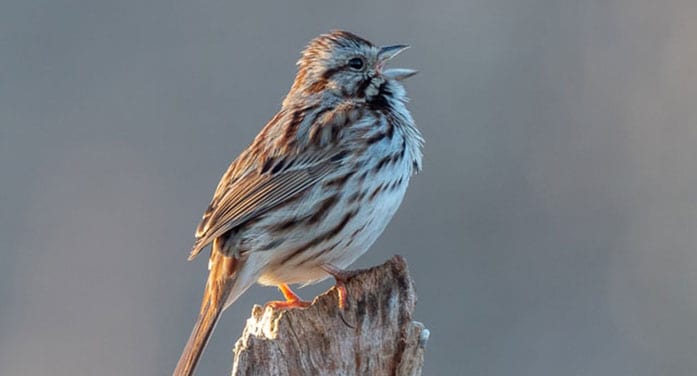 We may sometimes feel as if we’re still locked in the dead of winter, but to birds, mammals, insects and even plants, things are changing.
We may sometimes feel as if we’re still locked in the dead of winter, but to birds, mammals, insects and even plants, things are changing.
Faithful readers will recall how I recently explained that my trees were getting ‘fat,’ as the buds enlarge in anticipation of spring. But they’re not alone in their rush towards spring.
Physiological and hormonal changes are taking place amongst tens of thousands of organisms in Canada. These changes are, for the most part, responsive to weather and ambient light conditions. As the days grow longer, environmental and behavioural changes ensue, and wildlife responds accordingly.
The most obvious is when we hear bird song in the dead of winter. Chickadees change from uttering their “chickadee-dee-dee” call to their spring song “peabody, peabody.” Cardinals fly to the top of trees and burst forth with their lovely song. House finches give up their soft winter chip for a melodic summer warbling song.
But it’s not only the birds that will nest here that start to sing. Migrants are subject to the same urges and impulses.
The dark-eyed junco is a familiar winter visitor to our feeder and it utters a short twittering sound. And that beautiful trill is the juncos doing their spring song. They’re not as quick to start as the cardinals and chickadees, but nonetheless they start and persist until they leave for northern breeding grounds in April.
On nights when the barometric pressure is correct and the wind is light, we can hear a male great horned owl hooting to its partner. Five “whoo-whoo-whoo-whoowhoo” notes are replied to by the female in a septet of similar sounds, albeit slightly higher in tone. She answers her amorous mate on a cold January night, in preparation for mating and nesting in February.
By early March, American woodcocks return and almost immediately start to do their courtship flight. On their wintering grounds to the south, they were practising so when they got here, they hit the ground singing, so to speak.
But why start to sing in late winter and early spring, when it’s still cold?
For locally nesting species, the early bird does get the worm. The strongest males will claim territories early and have the choice of the best mates and the best breeding sites, where food and shelter are assured.
As climate influences alter our landscape and impact when and how much food is available, these early nesters will fare better than transients, which are on the move when the best territories are being claimed.
For migrants, singing allows them to do two things:
- Hone their singing skills, kind of like rehearsals, so when they get to their breeding grounds, they can sing at their best and thus get a mate quickly. This is most important for birds just born last year that haven’t yet tested the reproductive cycle.
- Many birds start to choose their mate while they migrate. If your future mate is travelling with you, you can impress her now and when you reach the breeding grounds, you can start to nest immediately.
But doesn’t it also take energy away when the birds need to conserve it most?
Yes, but the advantages of a successful breeding season far outweigh the negative impacts of energy loss.
In mammals, too, these changes are happening and the responses are similar. Many species court and breed in the dead of winter, so they can time the arrival of their offspring to when prey is most readily available to feed the babies.
Not as vocal assuredly as birds, mammals nonetheless start the courtship early. Musk and urine are deposited frequently around a territory and females in estrous emit appealing pheromones that bring the males running.
So despite our impressions of the outdoors right now, much is changing. The rebirth of spring is well underway.
Geoff Carpentier is a published author, expedition guide and environmental consultant. Visit Geoff online at www.avocetnatureservices.com, on LinkedIn and Facebook.
The views, opinions and positions expressed by columnists and contributors are the author’s alone. They do not inherently or expressly reflect the views, opinions and/or positions of our publication.


